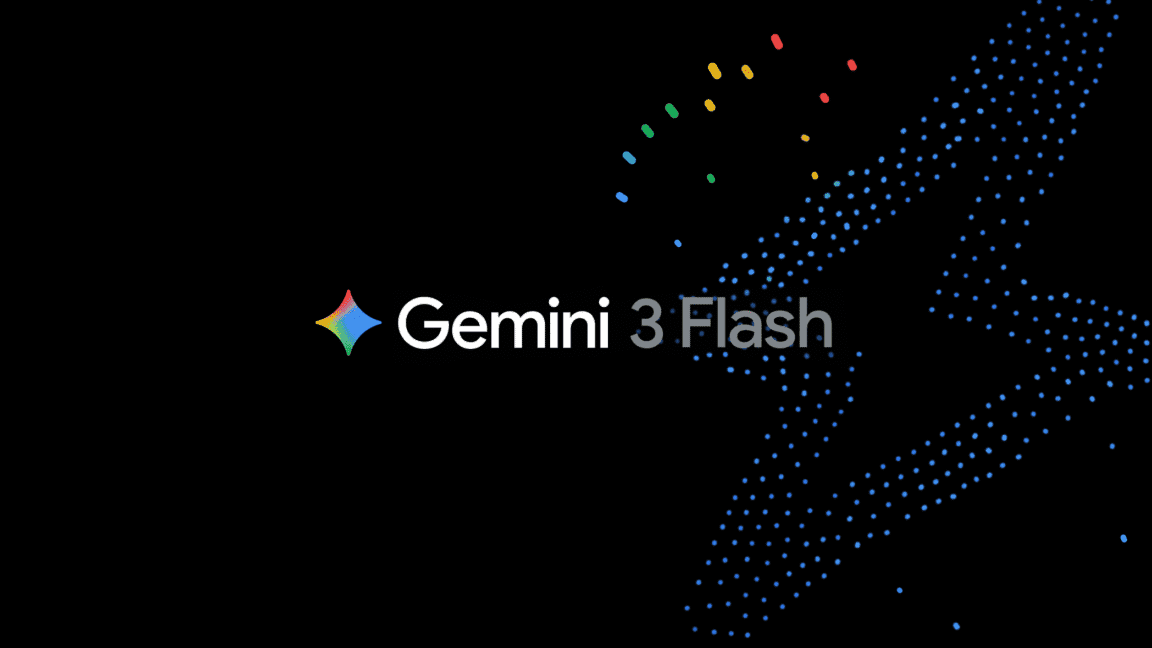Stanford Study Reveals Gap Between Worker Desires and AI Capabilities in the Workplace
2 Sources
2 Sources
[1]
What workers really want from AI
A Stanford study captures the gap between worker desires and AI's abilities, and highlights areas ripe for research and development. Artificial intelligence is radically shifting the labor market. Today's workers are increasingly turning to AI for everyday tasks, while automation is reshaping entire sectors of the economy and companies from Amazon to Microsoft are announcing workforce reductions driven by AI deployment. But the narrative in earning calls and news articles leaves critical questions unanswered: What do workers want from AI, and does the technology's capabilities align with those desires? To answer these questions, researchers from the Stanford Institute for Human-Centered AI and the Digital Economy Lab undertook a comprehensive study of U.S. workers and AI experts. They surveyed 1,500 workers to discern where AI agents could benefit work and where they might cause harm and interviewed 52 AI experts to better understand the technology's current abilities. The researchers then plotted worker desires alongside AI capabilities to identify opportunities and tasks that warrant reconsideration for automation. The preprint study concluded that workers seek automation primarily for repetitive tasks but prefer to retain agency and oversight over these AI tools. Alarmingly, it also revealed a significant disconnect between what employees desire from AI and the reality of its current capabilities. The findings also suggest a shift in the type of work that earns higher wages: Salaries for traditional information analysis will likely dip, while interpersonal skills and emotional intelligence will earn more. "As the workforce evolves, understanding and bridging the gap between worker expectations and the realities of AI capabilities will be crucial for organizations striving for successful integration," said co-author Diyi Yang, a Stanford assistant professor of computer science and affiliate of Stanford HAI. "This report offers a timely and structured baseline of where we are right now." What people want The scholars surveyed 1,500 individuals in 104 occupations to understand where workers desire automation and where they resist it. Trust emerged as a top concern: 45% expressed doubts about the accuracy and reliability of AI systems, while 23% feared job loss and 16% worried about the lack of human oversight. Many respondents were especially concerned about AI encroaching on creative tasks or handling communication with vendors and clients. Conversely, they welcomed automation that would free up time for higher-value work (69.4%), reduce task repetitiveness (46.6%), and improve the quality of their work (46.6%). Specifically, they welcomed automation that might include scheduling client appointments, maintaining files of information, or rectifying errors in records. The study also explored preferences regarding the level of AI involvement. Most respondents favored a collaborative approach, with 45.2% desiring an equal partnership between workers and AI and 35.6% seeking human oversight at critical junctures. This indicates a clear resistance to fully automated systems, the scholars noted. "The findings suggest that AI agents can play a supportive role in the workplace, relieving workers of low-value or tedious tasks rather than displacing workers," said Erik Brynjolfsson, an author of the study and director of the Stanford Digital Economy Lab. Revealing the gaps The research team then leveraged the expertise of AI experts to classify tasks into four categories: * Green Light Zone: Tasks with high automation desire and high capability * Red Light Zone: Tasks with low desire and high capability * R&D Opportunity Zone: Tasks with high desire but low capability * Low Priority Zone: Tasks with low desire and low capability By mapping companies' AI use to these zones, the team identified significant mismatches: 41% of tasks landed in the Low Priority and Red Light zones, meaning much of the AI implementation is either unwanted or technically not possible. That included writing creative content or preparing meeting agendas. Other tasks fell into the R&D Opportunity Zone - desired but not technically possible. Those tasks included monitoring budgets and creating production schedules. "This map highlights a pressing need to intensify research efforts focused on tasks in the R&D Opportunity Zone," Brynjolfsson emphasized. "By doing so, we can better align future AI agents with high-impact opportunities that are currently underexplored." A shift in valued skills As AI and automation redefine work, the importance of worker skills may also evolve, the scholars said. To explore this shift, they analyzed U.S. Bureau of Labor Statistics data, comparing the value of various skills with those least susceptible to replacement by AI. Here they found some interesting patterns. Their analysis suggests that current high-wage skills - such as data analysis and process monitoring - may diminish in value. In contrast, skills related to prioritizing and organizing work, training and teaching, and effective communication will grow in importance. "We anticipate a declining demand for skills tied to data analysis, where AI has demonstrated strong capabilities, while an increased emphasis will be placed on skills that require human interaction and coordination," said Yang. "These findings offer early insights into how the integration of AI agents may reshape core competencies in the workforce." Why do worker preferences matter? "As AI systems become increasingly capable, decisions about how to deploy them in the workplace are often driven by what is technically feasible - yet workers are the ones most affected by these changes and the ones the economy ultimately relies on," said Yijia Shao, a PhD student at Stanford Computer Science Department leading this project. Bringing their perspectives to the table is critical not only for ensuring ethical adoption but also for building systems that are trusted, embraced, and truly effective in practice. It also helps reveal overlooked opportunities and guide more human-centered innovation, which in turn benefits technological development. While this study represents the first large-scale examination of worker preferences versus technical capabilities, the researchers acknowledge that the work must be continually updated to keep pace with rapid advancements in AI. Staying current will be essential for companies to successfully adopt AI and for workers to best collaborate with it.
[2]
Survey reveals gap between worker desires and AI's current workplace abilities
A Stanford study captures the gap between worker desires and AI's abilities and highlights areas ripe for research and development. Artificial intelligence is radically shifting the labor market. Today's workers are increasingly turning to AI for everyday tasks, while automation is reshaping entire sectors of the economy and companies from Amazon to Microsoft are announcing workforce reductions driven by AI deployment. But the narrative in earning calls and news articles leaves critical questions unanswered: What do workers want from AI, and does the technology's capabilities align with those desires? To answer these questions, researchers from the Stanford Institute for Human-Centered AI and the Digital Economy Lab undertook a comprehensive study of U.S. workers and AI experts. They surveyed 1,500 workers to discern where AI agents could benefit work and where they might cause harm and interviewed 52 AI experts to better understand the technology's current abilities. The researchers then plotted worker desires alongside AI capabilities to identify opportunities and tasks that warrant reconsideration for automation. The study posted to the arXiv preprint server concluded that workers seek automation primarily for repetitive tasks but prefer to retain agency and oversight over these AI tools. Alarmingly, it also revealed a significant disconnect between what employees desire from AI and the reality of its current capabilities. The findings also suggest a shift in the type of work that earns higher wages: Salaries for traditional information analysis will likely dip, while interpersonal skills and emotional intelligence will earn more. "As the workforce evolves, understanding and bridging the gap between worker expectations and the realities of AI capabilities will be crucial for organizations striving for successful integration," said co-author Diyi Yang, a Stanford assistant professor of computer science and affiliate of Stanford HAI. "This report offers a timely and structured baseline of where we are right now." What people want The scholars surveyed 1,500 individuals in 104 occupations to understand where workers desire automation and where they resist it. Trust emerged as a top concern: 45% expressed doubts about the accuracy and reliability of AI systems, while 23% feared job loss and 16% worried about the lack of human oversight. Many respondents were especially concerned about AI encroaching on creative tasks or handling communication with vendors and clients. Conversely, they welcomed automation that would free up time for higher-value work (69.4%), reduce task repetitiveness (46.6%), and improve the quality of their work (46.6%). Specifically, they welcomed automation that might include scheduling client appointments, maintaining files of information, or rectifying errors in records. The study also explored preferences regarding the level of AI involvement. Most respondents favored a collaborative approach, with 45.2% desiring an equal partnership between workers and AI and 35.6% seeking human oversight at critical junctures. This indicates a clear resistance to fully automated systems, the scholars noted. "The findings suggest that AI agents can play a supportive role in the workplace, relieving workers of low-value or tedious tasks rather than displacing workers," said Erik Brynjolfsson, an author of the study and director of the Stanford Digital Economy Lab. Revealing the gaps The research team then leveraged the expertise of AI experts to classify tasks into four categories: * Green Light Zone: Tasks with high automation desire and high capability * Red Light Zone: Tasks with low desire and high capability * R&D Opportunity Zone: Tasks with high desire but low capability * Low Priority Zone: Tasks with low desire and low capability By mapping companies' AI use to these zones, the team identified significant mismatches: 41% of tasks landed in the Low Priority and Red Light zones, meaning much of the AI implementation is either unwanted or technically not possible. That included writing creative content or preparing meeting agendas. Other tasks fell into the R&D Opportunity Zone -- desired but not technically possible. Those tasks included monitoring budgets and creating production schedules. "This map highlights a pressing need to intensify research efforts focused on tasks in the R&D Opportunity Zone," Brynjolfsson emphasized. "By doing so, we can better align future AI agents with high-impact opportunities that are currently underexplored." A shift in valued skills As AI and automation redefine work, the importance of worker skills may also evolve, the scholars said. To explore this shift, they analyzed U.S. Bureau of Labor Statistics data, comparing the value of various skills with those least susceptible to replacement by AI. Here they found some interesting patterns. Their analysis suggests that current high-wage skills -- such as data analysis and process monitoring -- may diminish in value. In contrast, skills related to prioritizing and organizing work, training and teaching, and effective communication will grow in importance. "We anticipate a declining demand for skills tied to data analysis, where AI has demonstrated strong capabilities, while an increased emphasis will be placed on skills that require human interaction and coordination," said Yang. "These findings offer early insights into how the integration of AI agents may reshape core competencies in the workforce." Why do worker preferences matter? "As AI systems become increasingly capable, decisions about how to deploy them in the workplace are often driven by what is technically feasible -- yet workers are the ones most affected by these changes and the ones the economy ultimately relies on," said Yijia Shao, a Ph.D. student at Stanford Computer Science Department leading this project. Bringing their perspectives to the table is critical not only for ensuring ethical adoption but also for building systems that are trusted, embraced, and truly effective in practice. It also helps reveal overlooked opportunities and guide more human-centered innovation, which in turn benefits technological development. While this study represents the first large-scale examination of worker preferences versus technical capabilities, the researchers acknowledge that the work must be continually updated to keep pace with rapid advancements in AI. Staying current will be essential for companies to successfully adopt AI and for workers to best collaborate with it.
Share
Share
Copy Link
A comprehensive study by Stanford researchers highlights the mismatch between what workers want from AI and its current abilities, suggesting areas for future development and potential shifts in valued workplace skills.
Stanford Study Uncovers Mismatch Between Worker Expectations and AI Capabilities
A groundbreaking study conducted by researchers from the Stanford Institute for Human-Centered AI and the Digital Economy Lab has shed light on the complex relationship between workers and artificial intelligence in the modern workplace. The comprehensive research, which surveyed 1,500 U.S. workers across 104 occupations and interviewed 52 AI experts, reveals a significant gap between what employees desire from AI and the technology's current capabilities
1
2
.Worker Preferences and Concerns
The study found that workers are generally open to AI automation for specific tasks, but with important caveats:
- 69% welcome automation that frees up time for higher-value work
- 46% appreciate AI's potential to reduce task repetitiveness and improve work quality
- 45% express concerns about the accuracy and reliability of AI systems
- 23% fear job loss due to AI implementation
- 16% worry about the lack of human oversight in AI-driven processes
1
2
Notably, workers showed a clear preference for a collaborative approach with AI:
- 45% desire an equal partnership between humans and AI
- 35% seek human oversight at critical junctures
- There is a strong resistance to fully automated systems
1
2
Mapping AI Capabilities to Worker Desires

Source: Tech Xplore
The research team classified tasks into four categories based on worker desires and AI capabilities:
- Green Light Zone: High desire and high capability
- Red Light Zone: Low desire but high capability
- R&D Opportunity Zone: High desire but low capability
- Low Priority Zone: Low desire and low capability
This classification revealed significant mismatches in current AI implementation:
- 41% of tasks fell into the Low Priority and Red Light zones, indicating unwanted or technically unfeasible AI applications
- Tasks like creative content writing and meeting agenda preparation were found to be either undesired or not possible with current AI
1
2
Related Stories
Shifting Landscape of Valued Skills
The study also analyzed U.S. Bureau of Labor Statistics data to predict changes in the value of various workplace skills:
- Traditional high-wage skills like data analysis and process monitoring may diminish in value
- Skills related to prioritizing work, training, teaching, and effective communication are expected to grow in importance
1
2
Implications for the Future of Work

Source: Stanford
Erik Brynjolfsson, director of the Stanford Digital Economy Lab and study co-author, emphasized the need for focused research and development:
"This map highlights a pressing need to intensify research efforts focused on tasks in the R&D Opportunity Zone. By doing so, we can better align future AI agents with high-impact opportunities that are currently underexplored."
1
2
The study's findings suggest that AI's role in the workplace should be supportive rather than displacing, focusing on relieving workers of low-value or tedious tasks. As AI capabilities continue to evolve, bridging the gap between worker expectations and AI realities will be crucial for successful integration in the workforce
1
2
.This research provides valuable insights for organizations and policymakers as they navigate the complex landscape of AI implementation in the workplace, highlighting the importance of considering worker preferences alongside technological capabilities.
References
Summarized by
Navi
[1]
Related Stories
Recent Highlights
1
Google launches Gemini 3 Flash as default AI model, delivering speed with Pro-grade reasoning
Technology

2
OpenAI launches GPT Image 1.5 as AI image generator war with Google intensifies
Technology

3
OpenAI launches ChatGPT app store, opening doors for third-party developers to build AI-powered apps
Technology








